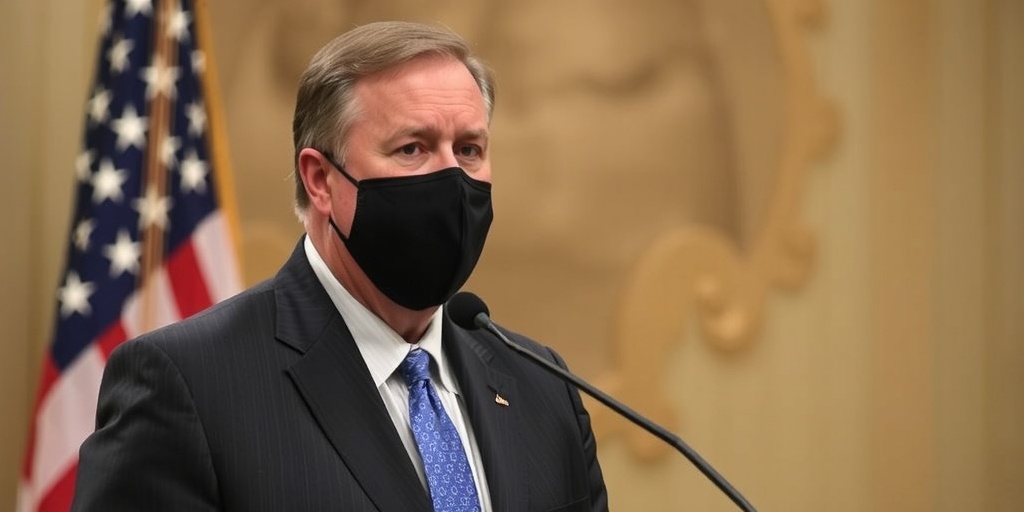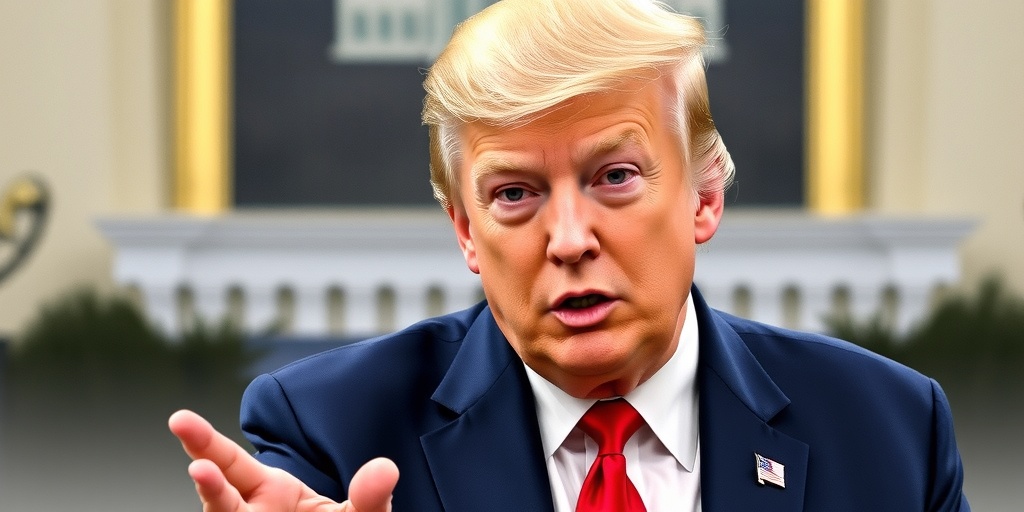Now Reading: Trump Proposes New Travel Ban Targeting 43 Countries
-
01
Trump Proposes New Travel Ban Targeting 43 Countries
Trump Proposes New Travel Ban Targeting 43 Countries
Trump Administration Proposes Sweeping Travel Ban Affecting 43 Countries
The Trump administration is contemplating a significant expansion of travel restrictions to the United States, potentially affecting citizens from as many as 43 countries. This proposal is poised to be more extensive than the travel bans enacted during Trump’s first term, according to knowledgeable officials who have been privy to internal discussions.
Recent drafts of recommendations from the State Department emphasize a “red” list that includes 11 countries whose citizens would face a complete ban on entry to the U.S. These countries are Afghanistan, Bhutan, Cuba, Iran, Libya, North Korea, Somalia, Sudan, Syria, Venezuela, and Yemen. The implications of these restrictions would significantly curtail entry from these nations, which have often been flagged for issues such as terrorism, security concerns, or diplomatic tensions.
Officials involved in evaluating the proposal, who requested anonymity due to the sensitive nature of the discussions, caution that the drafted list was created several weeks ago and is subject to change before it reaches the White House for final approval. Review processes are underway within embassies and various regional bureaus, with security specialists from multiple departments and intelligence agencies assessing the draft. They aim to determine whether the characterizations of deficiencies in each country’s security are accurate or if there are policy considerations that would necessitate reconsideration of particular nations on the list.
Beyond the definitive "red" list, the draft proposal also contains an “orange” list comprising 10 other countries where travel would be restricted but not entirely barred. Travelers from these nations could still enter the U.S., but typically affluent business visitors might be prioritized over individuals seeking entry on immigrant or tourist visas. Those on the orange list would be subjected to mandatory in-person interviews as part of the visa application process. Countries highlighted on this list include Belarus, Eritrea, Haiti, Laos, Myanmar, Pakistan, Russia, Sierra Leone, South Sudan, and Turkmenistan.
In January, shortly after taking office, Trump issued an executive order mandating the State Department to identify countries from which the vetting and screening processes were deficient enough to justify a full or partial suspension of admissions. The State Department is expected to finalize this report for the White House imminently, following a 60-day timeline established by the executive order. The Bureau of Consular Affairs has been tasked with leading this initiative, with assistance from the Justice and Homeland Security Departments and the Office of the Director of National Intelligence.
Despite requests for comments, officials from several agencies have remained tight-lipped regarding the ongoing evaluation. However, the State Department has reiterated its commitment to safeguarding national security through rigorous visa processes, while opting not to delve into specific internal deliberations.
Recent reports suggest that Afghanistan, which was not included in the previous travel bans but fell under Taliban control following the U.S. military withdrawal in 2021, is likely to be part of the forthcoming restrictions. The status of existing visa holders, including potential exemptions for green card holders who are already lawful permanent residents, remains ambiguous and is causing concern among many stakeholders.
This proposal comes on the heels of the Trump administration’s recent decision to revoke the green card of Mahmoud Khalil, a Syrian-born former graduate student at Columbia University. His deportation was attributed to his involvement in high-profile campus protests against Israel’s operations in Gaza, which the administration classified as antisemitic. This situation has ignited a legal battle over the legitimacy of the action.
Notably, many of the countries identified in the draft lists share common characteristics, such as being predominantly Muslim, underdeveloped, and governed by perceived corrupt administrations. However, the reasons for including specific countries, such as Bhutan—which lies between China and India and is traditionally viewed as a peaceful nation—are less clear.
The inclusion of Russia in the proposed travel bans presents a paradox for the administration, especially as Trump has sought to adopt a more Russia-friendly approach in U.S. foreign policy. Furthermore, a decision to impose restrictions on Venezuela could undermine ongoing diplomatic efforts aimed at addressing the issue of undocumented migrants.
Additionally, the administration is considering a yellow list that contains 22 countries, which would be given a 60-day window to rectify perceived deficiencies in their cooperation with U.S. travel security standards. Noncompliance could result in escalating their status to the red or orange lists.
Countries included on the draft yellow list comprise Angola, Antigua and Barbuda, Benin, Burkina Faso, Cambodia, Cameroon, Cape Verde, Chad, the Republic of Congo, the Democratic Republic of Congo, Dominica, Equatorial Guinea, Gambia, Liberia, Malawi, Mali, Mauritania, St. Kitts and Nevis, St. Lucia, São Tomé and Príncipe, Vanuatu, and Zimbabwe.
During Trump’s previous term, legal challenges thwarted the enforcement of the initial travel bans, but the U.S. Supreme Court ultimately allowed a revised ban to take effect, which affected citizens from eight predominantly Muslim countries. Following President Joe Biden’s inauguration in January 2021, he quickly revoked these travel bans, condemning them as discriminatory and contrary to America’s historical values of inclusion.
Trump’s executive order illustrates an ongoing drive to revive stringent travel restrictions, under the pretext of protecting U.S. citizens from foreign threats. As deliberations continue, affected countries remain on alert, and the global community watches closely for the implications of these strategic decisions, which promise to reshape U.S. immigration policy yet again.
Stay Informed With the Latest & Most Important News
Previous Post
Next Post
-
 01New technology breakthrough has everyone talking right now
01New technology breakthrough has everyone talking right now -
 02Unbelievable life hack everyone needs to try today
02Unbelievable life hack everyone needs to try today -
 03Fascinating discovery found buried deep beneath the ocean
03Fascinating discovery found buried deep beneath the ocean -
 04Man invents genius device that solves everyday problems
04Man invents genius device that solves everyday problems -
 05Shocking discovery that changes what we know forever
05Shocking discovery that changes what we know forever -
 06Internet goes wild over celebrity’s unexpected fashion choice
06Internet goes wild over celebrity’s unexpected fashion choice -
 07Rare animal sighting stuns scientists and wildlife lovers
07Rare animal sighting stuns scientists and wildlife lovers



















